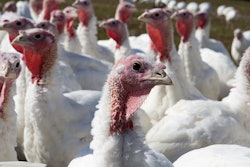
The United States Department of Agriculture (USDA) has not approved a highly pathogenic avian influenza vaccination program, but the agency has examined what details would be necessary for such a program to be effective if approved.
Dr. David Swayne, director for the USDA Agricultural Research Service (ARS) Southeast Poultry Research Laboratory, highlighted six components needed for an effective vaccination program while speaking during the session Highly Pathogenic Avian Influenza – Lessons Learned, held January 28, 2016, at the International Production and Processing Expo (IPPE) in Atlanta Georgia.
While Swayne’s discussion occurred more than six years ago, his expertise remains pertinent today. The thought of vaccinating poultry for HPAI is once again being discussed as North America deals with another HPAI outbreak that has been ongoing since December 2021.
The six key components needed in order for vaccination to be effective, according to Swayne, are:
- Those vaccinating must have a high quality or high potency vaccine to produce a high immune response
- Vaccines must closely match the field virus, or be antigenically relevant.
- A proper vaccination program identifies what types of birds are to be vaccinated, and their geographic location
- It is necessary to have an adequate number of vaccinations available. It is a misconception that only one dose will be needed per bird; in most cases it is a minimum of two
- Vaccinated populations need to be monitored to make sure they have a protected immune response
- Vaccinated flocks should be surveyed for the possible emergence of viruses that may be resistant to vaccines.
During his talk, Swayne reiterated reasons why the U.S. has not agreed to a highly pathogenic avian influenza vaccination program. An avian influenza control program using stamping out procedures alone eradicates the virus quicker than a program that combines stamping out and vaccination, and does so at a lesser expense to the operator. He also mentioned that vaccination has harmful trade ramifications and that vaccination can often be associated with complacency and assuming the flocks are healthy when they could be carrying the virus.
Read our ongoing coverage of the global avian influenza outbreak.

















